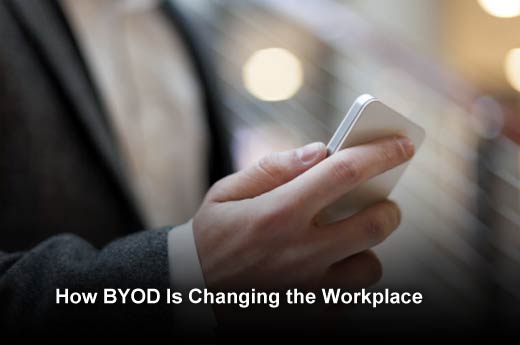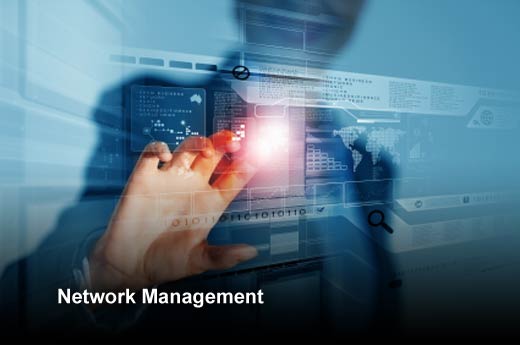Much has already been said about BYOD and how it affects end users, as well as what it takes to build a successful BYOD policy. But one of the most important ways that BYOD affects the workplace is through the IT employees who are forced to completely change the way they think about workplace technology.
In addition to changing hardware policy, BYOD alters the dynamics of workplace interactions between IT professionals and employees. While helping teams transition into BYOD is a high priority, it’s also essential that IT teams prepare for changes in the way they’re perceived.
By allowing teams to bring their own devices, new and unexpected variables come into the mix. By preparing for these new obstacles and expectations, teams can create an effective, adaptive BYOD gameplan. In this slideshow, Icreon Tech provides eight of the most important ways that BYOD is changing the role of IT in your workplace.
How BYOD Is Changing the Workplace
Click through for eight ways BYOD is changing IT and the workplace, as identified by Icreon Tech.
Steeper Security Curve
BYOD has often been viewed as a risky IT practice. Because of increased variety in device platforms and an increased amount of user autonomy, IT teams need to stay ahead of the curve when it comes to protecting company data. In addition to knowing where data is, IT must keep a close eye on where it goes, as well as who has access to it.
Gatekeepers No More
BYOD turns IT into a team of enablers who allow employees to streamline their work processes by using their own technology. Instead of being seen as gatekeepers who merely set up employees and then hold the line, they become a more positive, more interactive force in workplace technology.
Usage Policies
When employees use their own devices for business processes, it becomes necessary for businesses to be able to maintain some semblance of control over said devices. If an employee loses a device, for instance, a standard procedure is to remotely wipe the device of sensitive information. When implementing any sort of MDM (mobile device management) software, it’s important for IT to be clear and transparent about their usage policies for such tools so as not to invade employee privacy.
Apps and Services Management
Under a BYOD policy, one of the most important roles of IT is to manage enormous lists of licenses and accounts for apps and services across employee devices. As more of the company’s technology moves to the cloud, there will become more to account for, and IT will have to compile comprehensive lists of software for their BYOD users.
Addressing ‘What If’ Scenarios
How should IT handle resignations, terminations, or layoffs of BYOD employees? What if a team member loses their device? What happens when a team member’s device becomes obsolete? When adopting a BYOD policy, IT professionals need to think of every scenario possible and seek out ways to address them before they crop up.
Network Management
When your employees’ devices are not company-owned, it can become extremely complex to keep track of which ones are allowed to access the company’s network. In any BYOD environment, wireless infrastructure must be robust and reliable, with multiple authentication factors and strong NAC to keep sensitive data locked down.
On-boarding Process
Under a BYOD policy, it’s no longer sufficient to pre-load a corporate device with company software and simply hand a new employee a paper to sign. Instead, the on-boarding and educational process becomes an integral part of IT. During a new hire’s first days, device setup will be an absolute priority so that the team member can get used to their new software and acclimate to IT policy requirements.
IT and HR
Because of the crossover between private and corporate usage of BYOD hardware, policy is an extremely important issue. Because of this, IT will need to work along with HR to strike an ideal balance between what works best for the business while also avoiding infringements on employee privacy.











